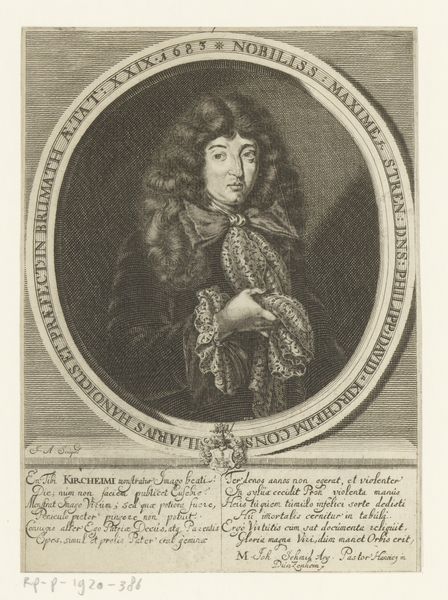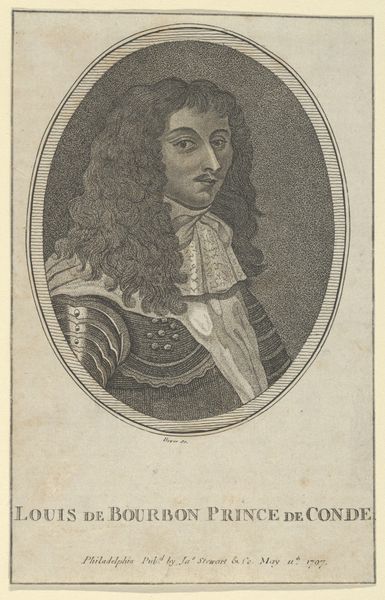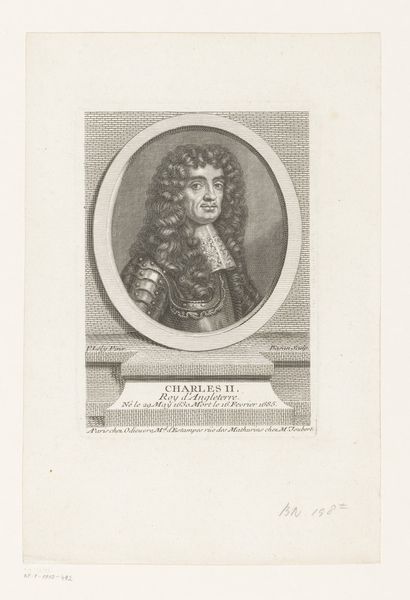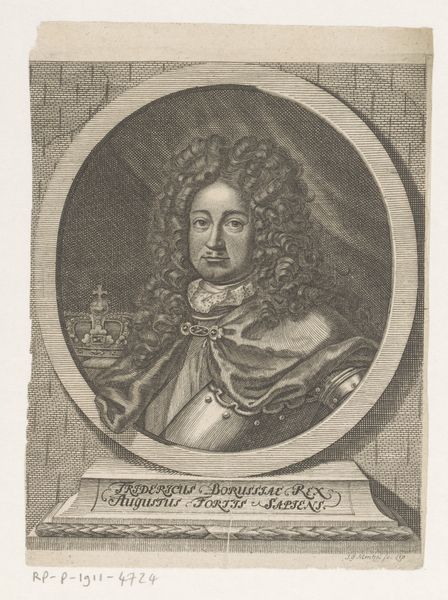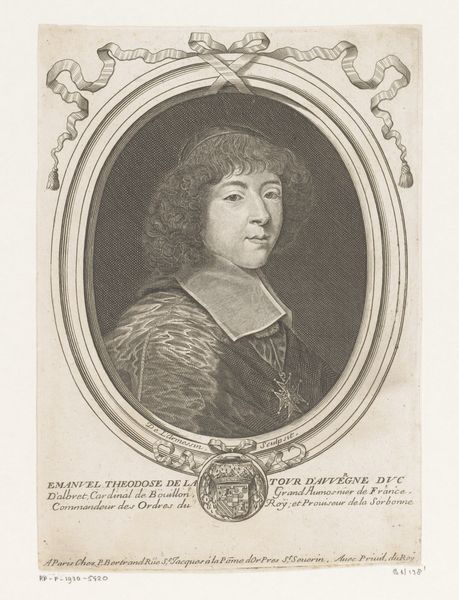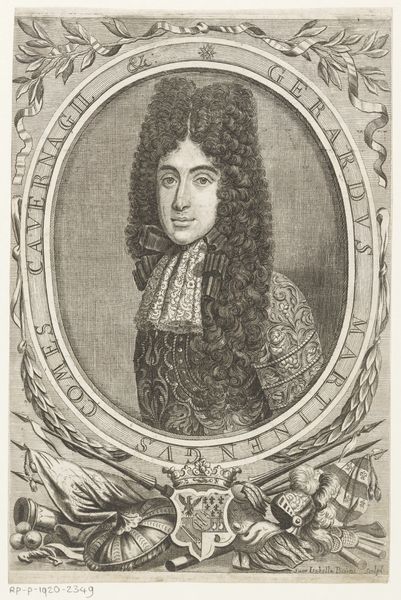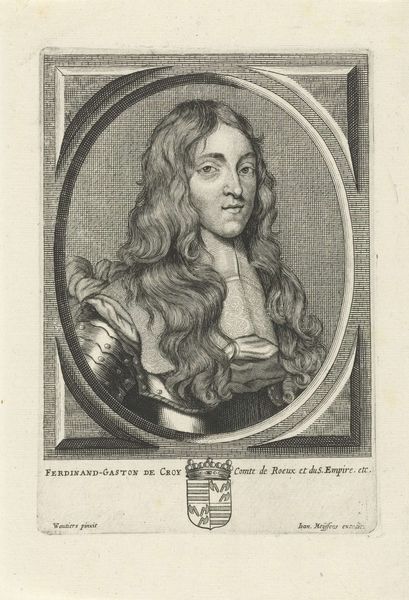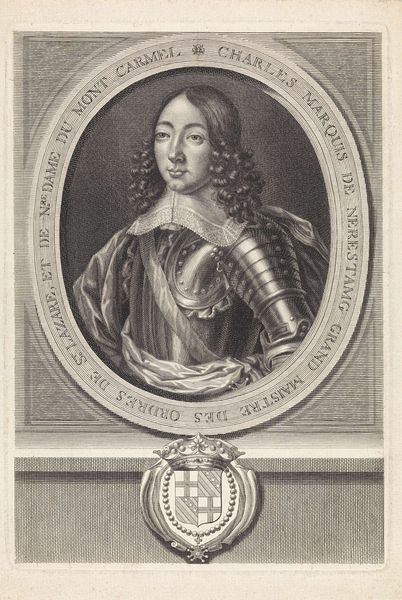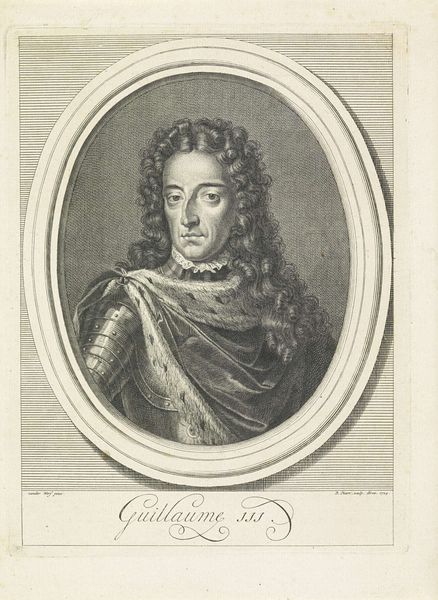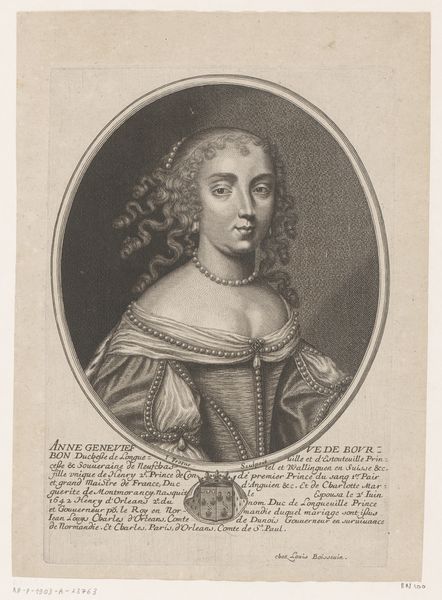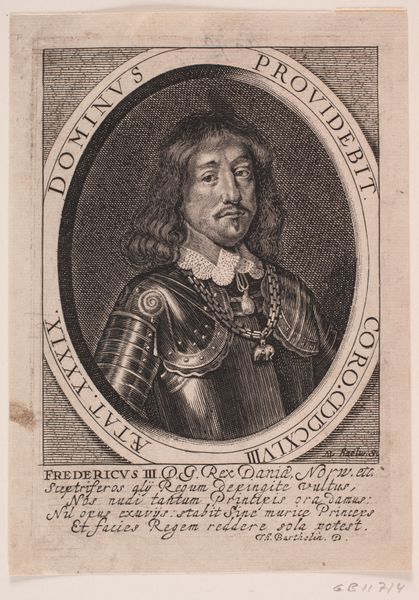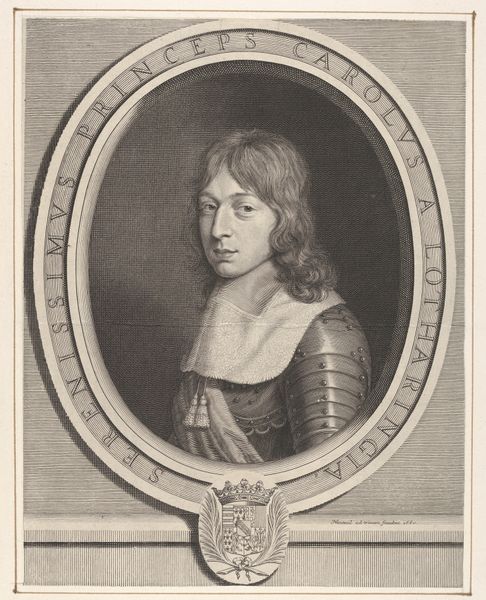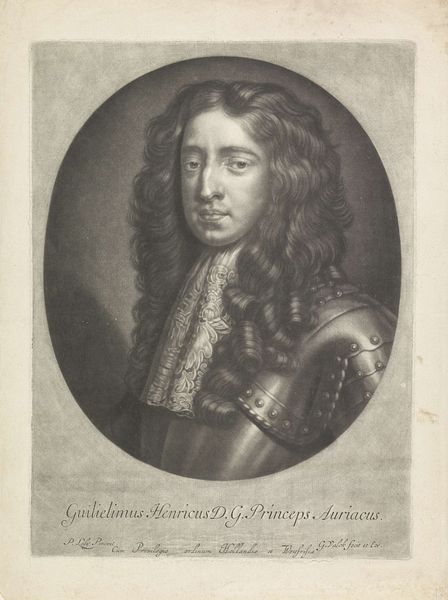
Dimensions: height 102 mm, width 60 mm
Copyright: Rijks Museum: Open Domain
Editor: This is an engraving entitled "Portret van Gaston Jean-Baptiste hertog van Orléans" attributed to Meno Haas, dating roughly from 1762 to 1833. The baroque style seems pretty evident in the detail, and the oval format is very classic. I’m struck by how meticulously rendered it is; it feels both formal and a bit melancholic. What sort of reading do you get from this portrait? Curator: The image speaks of the burdens of inherited status. Consider the intricate lace collar, the polished armour, the symbols of rank and duty displayed; they signify privilege, certainly, but also constraint. Does Gaston look comfortable? Or is there a weariness in his eyes, a premonition perhaps of the rebellions and exiles that marked his life? These details echo through time, what is imposed vs. freely assumed. Editor: Weariness, yes, that's a great observation. The symbols definitely communicate power, but I hadn’t thought of the constraints they represent. I guess I was mostly seeing a static depiction of nobility. Curator: Engravings like this often served to perpetuate a specific image, a narrative of power. But the artist, through subtle choices, might also hint at a more complex truth. Consider how the artist frames him... what happens when you view nobility outside a regal portrait? Is the feeling of constraint more obvious then? Editor: So, even within a fairly conventional portrait, there can be subtle visual clues that challenge the official narrative. The way the artist presents those culturally loaded images is what makes it stick. Curator: Precisely! And understanding those symbols and the emotions tied to them allows us to read between the lines and engage with history in a more meaningful way. We both learn.
Comments
No comments
Be the first to comment and join the conversation on the ultimate creative platform.

